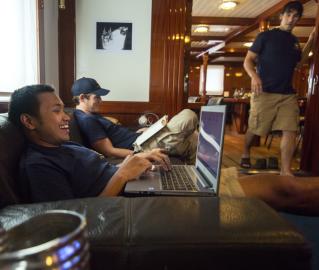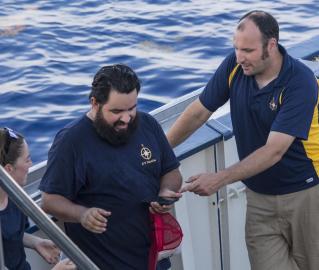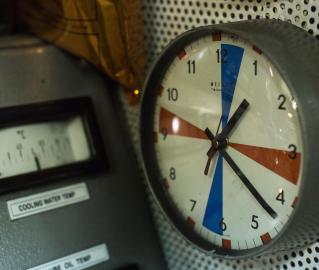Dyeing Corals to Find Life

Blog by:
Chuck Fisher, Penn State University
Melissa Kurman, Temple University
On the final dive with the ECOGIG project, scientists on board released a dye pack around a coral and took high resolution images to detect even the smallest increases in growth on the coral colony.
The experiment is being conducted by scientists from Temple University. These corals all grow quite slowly, and current information on their growth rates are mainly from estimates based on Carbon-14 dating of the oldest parts of the colony. This experiment will give direct measurements of growth rates and also show the patterns of growth.
The dye is Calcein, a fluorescent dye that stains the skeleton of the octocorals. Scientists on board collected small pieces during the dive to make sure that the dye is being taken up and will return next year to collect the entire coral. When examined, all of the new growth will be unstained.
The first use of the stainer was about a month ago in the Gulf of Mexico with Alvin and on a different kind of coral, Callogorgia. The staining that took place early Monday morning was on a Paramuricea, mostly due to the fact that they are the most abundant corals at those depths. This dive was to about 1,000m (3,000 feet).
The calcein must be prepared at least 24 hours before deployment because the solid particles are slightly hesitant to dissolve completely. Calcein is an orange powder before it's mixed into solution, and when combined with sea water creates the vibrant yellow-green color that is visible on the footage.

Scientists on board filled two syringes with the calcein dye, placed them in the locked actuators, and attached a small tube which allows the stain to enter the chamber. As seen in the video above, the actuators are the black boxes on either side of the chamber. They hold the syringe in place and at the pull of a pin push down on the syringe and activate the staining. During the dive one became stuck and did not activate, but it did end up activating at the surface right before the stainer was lost to the sea. The team believes this was due to a pressure problem or a problem during the ROV launch, but luckily one did work and the team was able to dye enough coral to begin the experiment.
The stainer must be left in place for at least six hours to ensure that the coral takes up the dye, and for this dive it was left for about fourteen hours. The stain is taken up by the polyps of the coral, and then permeates the skeleton where it should stay to be seen under UV light. We will be able to see growth because the new growth (the living polyps) will not hold the stain, while the old growth will. The team collected a small sample to bring back to the lab to confirm that the staining worked, as they are still trying to perfect the method.

ECOGIG
This cruise is part of a larger research program focused on examining the ecosystem-level response to oil and gas in the Gulf of Mexico. The research group leading the cruise is called the Ecosystem Impacts of Oil and Gas Inputs into the Gulf of Mexico (ECOGIG) Consortium, which is made up of scientists from a wide variety of disciplines studying current flow, ocean chemistry, microbial activity, deep-sea coral communities, and everything in between.









